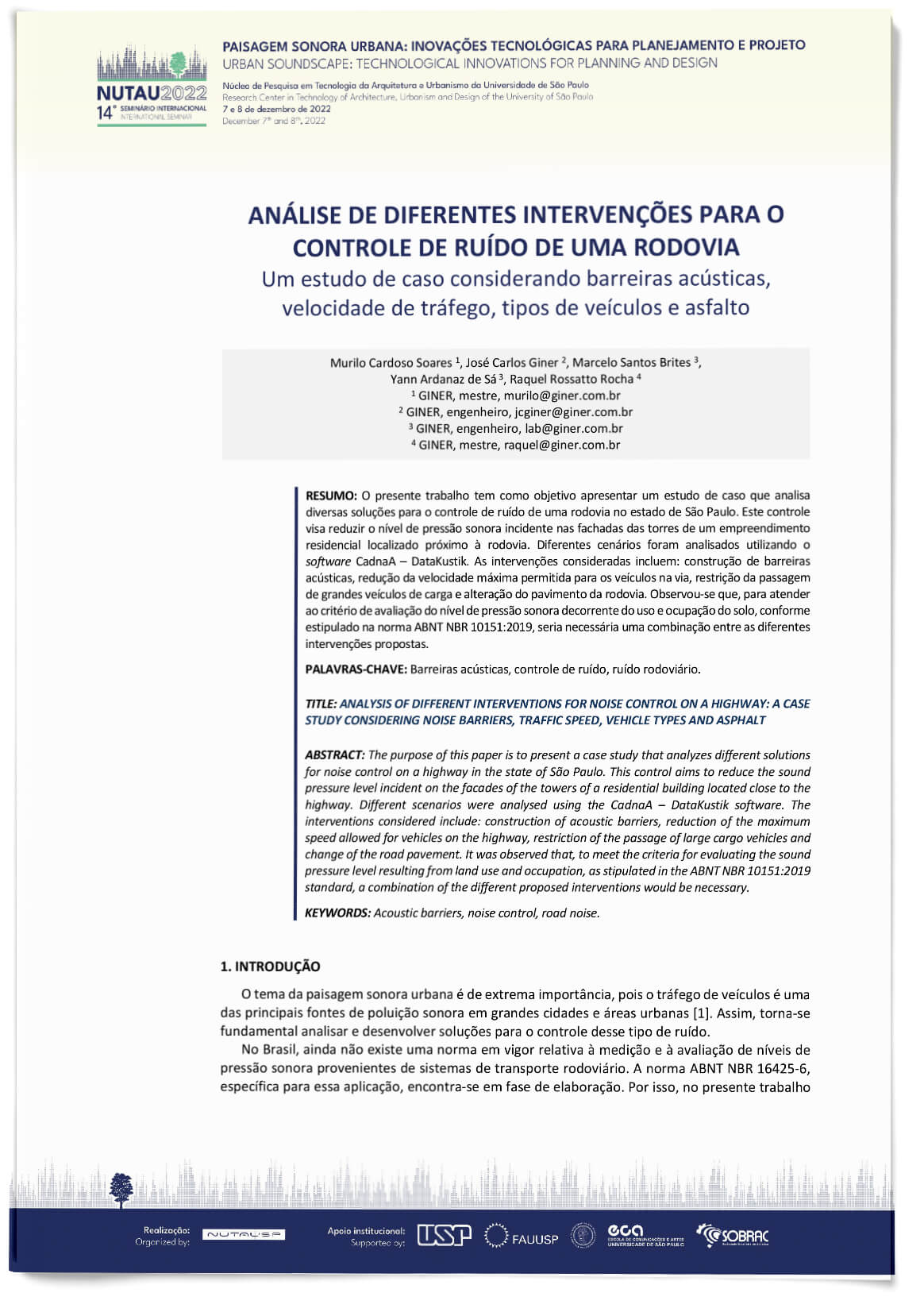Analysis of different interventions for noise control on a highway
a case study considering noise barriers, traffic speed, vehicle types and asphalt
DOI:
https://doi.org/10.55753/aev.v38e55.233Keywords:
acoustic barriers, noise control, road noiseAbstract
The purpose of this paper is to present a case study that analyzes different solutions for noise control on a highway in the state of São Paulo. This control aims to reduce the sound pressure level incident on the facades of the towers of a residential building located close to the highway. Different scenarios were analysed using the CadnaA – DataKustik software. The interventions considered include: construction of acoustic barriers, reduction of the maximum speed allowed for vehicles on the highway, restriction of the passage of large cargo vehicles and change of the road pavement. It was observed that, to meet the criteria for evaluating the sound pressure level resulting from land use and occupation, as stipulated in the ABNT NBR 10151:2019 standard, a combination of the different proposed interventions would be necessary.
References
(1) Ouis, D. (2001). Annoyance from road traffic noise: a review. Journal of Environmental Psychology, 21(1), 101–120. DOI: https://doi.org/10.1006/jevp.2000.0187
(2) Associação Brasileira de Normas Técnicas (2019). Acústica — Medição e avaliação de níveis de pressão sonora em áreas habitadas — Aplicação de uso geral (ABNT NBR 10151).
(3) Ekici, I.; Bougdah, H. (2003). A review of research on environmental noise barriers. Building Acoustics, 10(4), 289–323. DOI: https://doi.org/10.1260/135101003772776712
(4) Iannone, G.; Guarnaccia, C.; Quartieri, J. (2013). Speed distribution influence in road traffic noise prediction. Environmental Engineering and Management Journal, 12(3), 493–501. DOI: https://doi.org/10.30638/eemj.2013.061
(5) Gündoğdu, Ö.; Gökdağ, M.; Yüksel, F. (2005). A traffic noise prediction method based on vehicle composition using genetic algorithms. Applied acoustics, 66(7), 799–809. DOI: https://doi.org/10.1016/j.apacoust.2004.11.003
(6) Sandberg, U. (1987). Road traffic noise—The influence of the road surface and its characterization. Applied Acoustics, 21(2), 97–118. DOI: 10.1016/0003-682X(87)90004-1. DOI: https://doi.org/10.1016/0003-682X(87)90004-1
(7) DataKustik. CadnaA – State-of-the-art Noise Prediction Software. https://www.datakustik. com/products/cadnaa/cadnaa.
(8) Karantonis, P.; Gowen, T.; Simon, M. (2010). Further comparison of traffic noise predictions using the CadnaA and SoundPLAN noise prediction models. In: Proceedings of 20th International Congress on Acoustics (ICA), 23–27.
(9) Kephalopoulos, S.; Paviotti, M.; Anfosso-Lédée, F. (2012). Common Noise Assessment Methods in Europe (CNOSSOS-EU), European Commission, 180-p.

Published
How to Cite
Issue
Section
License
Copyright (c) 2023 Acústica e Vibrações

This work is licensed under a Creative Commons Attribution-NonCommercial-ShareAlike 4.0 International License.




